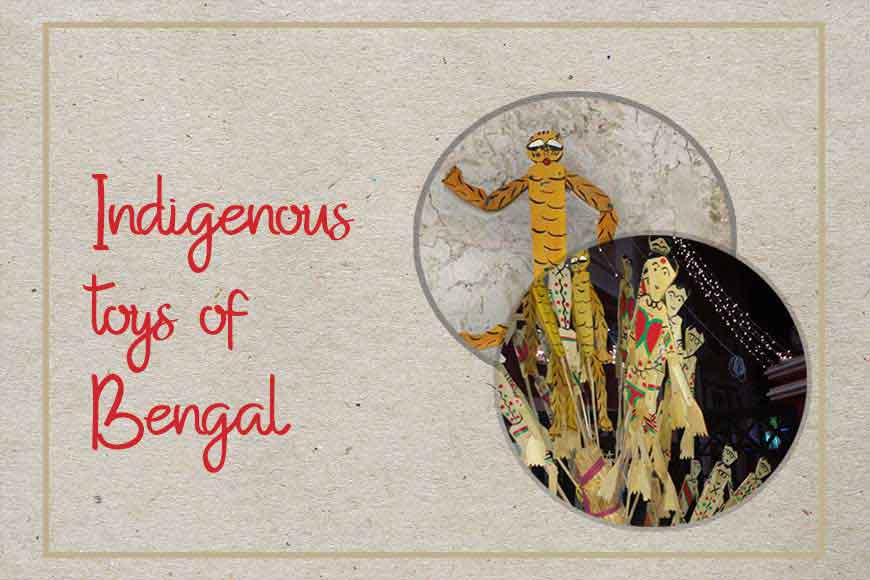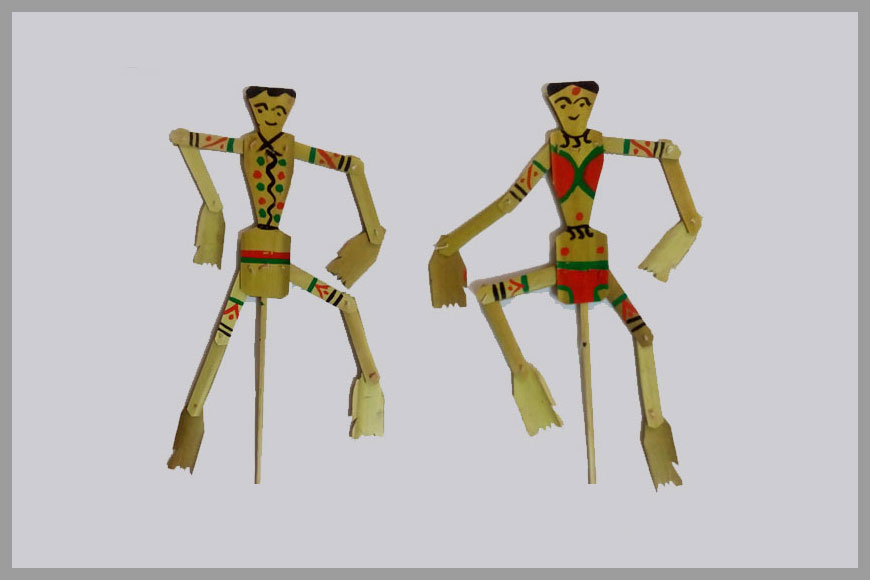Villagers of Birbhum still craft Bengal’s indigenous toy ‘Taalpatar Sepai’

Taal-patar Sepai is a hypocorism in Bengali used to address a weak and rickety person who shows bravado. But to us all it is a delicate toy, carved from dried palm (Taal) leaf in the form of a soldier/ policeman in uniform. A stick attached at the back of the toy with strings tied to its head, feet and hands enabled the holder to maneuver the toy’s movements and this was a great attraction for the kids once upon a time. A favourite toy both in rural as well as urban Bengal, it occupied a distinct place in the treasure-trove of toys and vied for attention from onlookers.
During fairs, hawkers selling Taal-patar Sepai and other toys would attract a big crowd of children and their guardians who invariably bought these cheap toys in bulk for the children in the family and also as gift items for neighbourhood kids. In fact, the toy was so popular that it entered Bengali vocabulary. But the home-crafted Taal-patar Sepai is now lost in the annals of history. Times have changed and so have tastes. These local toys were replaced by more attractive plastic and rubber toys and then by video games. It was easy to hook children to newer modes of entertainment so no one plays with these toy soldiers any more.

The art of making Taal-patar Sepai was practiced widely in rural Bengal. The entire process required a lot of patience and creativity. The palm leaves would be sun-dried and then measured and cut into small pieces in the shape of various human body parts. These parts would be joined with bits of thread. Finally, the physical features of each soldier would be drawn meticulously using sketch pens or paint brush. Although a particular pattern was followed to drawn the figures, but each toy had distinct features and facial expressions depending on the handiwork of the artisan who painted each Sepai. After the paint dried, a stick would be attached at the back of the toy and the strings would be tied to make it mobile.
These days, there is an acute dearth of demand for this homogenous toy and toymakers associated with this trade are on the verge of extinction. But not all is lost yet. There are a couple of artisans in Birbhum district who still make a living by crafting Taal-patar Sepai and selling these at fairs and Haat (weekly markets). Mahidapur is a tiny hamlet in Birbhum district’s Bolpur-Sriniketan Block. Here lives Sheikh Aanesh, a sexagenarian toymaker who has been making these Taal-patar Sepai for decades now and selling them in fairs and weekly haats in villages. The family also sells these creations at the weekly haat held every Saturday at Khowai in Santiniketan. Even Gouranga Das of Raipur village has been making Taal-patar Sepai for past 15 years. He has even held exhibitions at prestigious sites in Delhi, Gurgaon, Bengaluru and other cities and his Taal-patar Sepai garnered a lot of interest among the visitors. These artisans staunchly believe that strategic positioning and aggressive marketing can once again revive this indigenous craft of Bengal.










